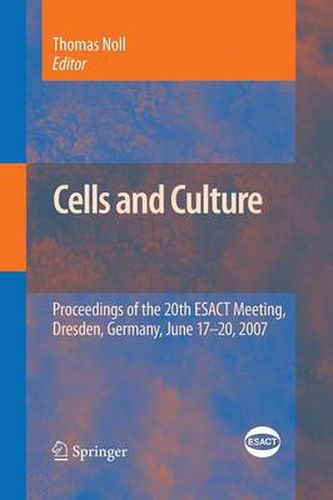Readings Newsletter
Become a Readings Member to make your shopping experience even easier.
Sign in or sign up for free!
You’re not far away from qualifying for FREE standard shipping within Australia
You’ve qualified for FREE standard shipping within Australia
The cart is loading…






This title is printed to order. This book may have been self-published. If so, we cannot guarantee the quality of the content. In the main most books will have gone through the editing process however some may not. We therefore suggest that you be aware of this before ordering this book. If in doubt check either the author or publisher’s details as we are unable to accept any returns unless they are faulty. Please contact us if you have any questions.
Regeneration of tissue to replace damaged or injured tissue is the goal of t- sue engineering. Biomaterials like polyglycolic acid, collagen and small-intestinal submuscosa provide a temporary scaffold to guide new tissue growth and or- nization. Typically, they need to be biodegradable, showing good cell atta- ment and proliferation and they should possess appropriate mechanical properties (Kim et al. , 2000). Synthetic polymers ful ll most of these requirements but lack cell-adhesion peptides on their surface to enhance cell attachment. Ce- adhesion peptides are present in ECM proteins like collagen and elastin. Thus a synthetic polymer coated with ECM proteins would result in a scaffold that mimics the natural cellular environment with enhanced cell attachment and p- liferation. The new bioactive scaffold will be made by combining a synthetic polymer coated with a layer of recombinant ECM proteins produced by CHO cells. The rst step consists of identifying polymers that give best results in terms of CHO cell attachment and growth. Classical techniques to determine biomass are inappropriate to evaluate 3-D structures. Thus a screening system based on stable GFP expressing CHO cells was used to compare the different scaffolds. Simple uorescent measurement after cell lysis allows determining cell attachment and p- liferation on synthetic polymers. Finally CHO cells producing human recombinant collagen I and elastin were generated. We showed that both proteins are expressed and secreted by CHO DG44 cells. 2 Materials and Methods 2.
$9.00 standard shipping within Australia
FREE standard shipping within Australia for orders over $100.00
Express & International shipping calculated at checkout
This title is printed to order. This book may have been self-published. If so, we cannot guarantee the quality of the content. In the main most books will have gone through the editing process however some may not. We therefore suggest that you be aware of this before ordering this book. If in doubt check either the author or publisher’s details as we are unable to accept any returns unless they are faulty. Please contact us if you have any questions.
Regeneration of tissue to replace damaged or injured tissue is the goal of t- sue engineering. Biomaterials like polyglycolic acid, collagen and small-intestinal submuscosa provide a temporary scaffold to guide new tissue growth and or- nization. Typically, they need to be biodegradable, showing good cell atta- ment and proliferation and they should possess appropriate mechanical properties (Kim et al. , 2000). Synthetic polymers ful ll most of these requirements but lack cell-adhesion peptides on their surface to enhance cell attachment. Ce- adhesion peptides are present in ECM proteins like collagen and elastin. Thus a synthetic polymer coated with ECM proteins would result in a scaffold that mimics the natural cellular environment with enhanced cell attachment and p- liferation. The new bioactive scaffold will be made by combining a synthetic polymer coated with a layer of recombinant ECM proteins produced by CHO cells. The rst step consists of identifying polymers that give best results in terms of CHO cell attachment and growth. Classical techniques to determine biomass are inappropriate to evaluate 3-D structures. Thus a screening system based on stable GFP expressing CHO cells was used to compare the different scaffolds. Simple uorescent measurement after cell lysis allows determining cell attachment and p- liferation on synthetic polymers. Finally CHO cells producing human recombinant collagen I and elastin were generated. We showed that both proteins are expressed and secreted by CHO DG44 cells. 2 Materials and Methods 2.